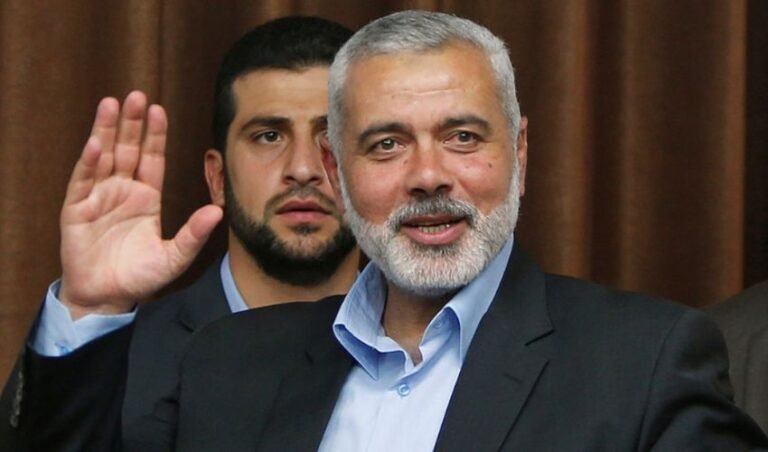Kim Jong Un and his growing aggression
In recent years, North Korea’s PM Kim Jong threats have often been dismissed as empty rhetoric by the international community. However, in his 13th year of leadership, Kim’s recent actions and statements suggests a worrying transformation. The problem with authoritarian figures like Putin and Kim is that they can often be unpredictable and their words must be taken with a grain of salt at all times.

In January 2024, North Koreas PM Kim Jong-un took some significant steps. He shut down agencies working on reunification and removed statements from his Constitution that indicated a willingness to reconcile with the South. He declared the right to annihilate South Korea, a statement that, under normal circumstances, might be dismissed. However, we live in an age of war and such threats cannot be taken lightly. North Korea’s nuclear and missile capabilities have matured significantly. This has got experts worried who fear that Kim might be eager to test his newfound strategic power. Wars in Ukraine and Gaza have shown, wars don’t follow the path of conventional wisdom and can occur anywhere at any time.
Potential consequences of a Korean conflict
A war involving North and South Korea will have devastating global ramifications. It is hard imagining a conflict smacked in the middle of the world’s second(China) third(Japan) and thirteenth(South Korea) largest economies. Supply Chains would collapse, inflation would Surge and the global economy would come to a grinding halt. Clearly Kim’s threats cannot be simply dismissed as mere rhetoric.

Stakes are however even higher for South Korea. It’s capital lies just a short distance from the demilitarized zone (DMZ) and is the heart of South Korea’s economy. The Greater Seoul Area produces around 70% of South Korea’s GDP and is home to around half of it’s population. It is headquarters to companies such as Samsung, KIA Motors, LG etc. Any conflict would likely result in massive artillery and rocket attacks on Seoul, leading to widespread destruction and global economic fallout.
Scenarios of armed conflict
There are multiple scenarios in which conflict could erupt between North Korea and South Korea. While a direct invasion like in 1950 is unlikely, a smaller provocation could easily escalate into a full blown war. During the 1950 Korean War, the North with aid from China and the Soviet Union was easily able to push South Korea to it’s Southern coastline near Busan until aid from the West arrived. The US and South Korean forces led by General McArthur were later able to push the North Koreans to the Chinese border until China under Mao also intervened and restored the territorial balance on the peninsula again. A repeat of such a scenario is unlikely not due to lack of will but mainly due to South Korea’s technological and military superiority.

Thus the most likely cause for a war can be miscalculations and misjudgments on both sides. A routine provocation for example could be misread and back and forth retaliation could spiral into a full out War. The most likely place for such a provocation is the border islands in the Yellow Sea, which have been the site of deadly incidents in the past as well. These border islands though controlled by the South are claimed by North and have been the site of various skirmishes. In 2010, a North Korean submarine sunk a South Korean warship that killed 46 sailors.
North Korea: Its military capability and strategy
North Koreas PM Kim Jong has about 12,000 artillery pieces and thousands of missiles and rockets aimed at South Korea. In the event of a conflict, Seoul sitting 40km from the border would face a barrage of artillery and rockets. According to a 2020 analysis by Rand Corporation just 1 minute of artillery and Rocket barrage would see 15,000 casualties. If the barrage lasts more than an hour, the numbers would climb to 100,000. According to the South Koreans the North can fire about 500,000 artillery rounds within the first hour and continue that pace for several hours. About half of South Korea’s population lives in the greater Seoul area. North Korea’s ability to sustain such an attack gives it significant political leverage, despite South Korea’s superior forces and preparedness.

At the same time as the barrage is happening, 200,000 North Korean troops will cross into the South according to a previous report by South Korea’s defense ministry. The rest of the troops from Kim’s 1.1 million army will soon follow suit. The objective of these troops will be to target and destroy the infrastructure on the Han River. The river flows through the center of Seoul. Doing so would split the city in two and trap millions of civilians from fleeing the scene and giving North Korea a bargaining chip in getting concessions from the South.
The North Koreans possess up to 5000 tons of Chemical weapons as well. These include chlorine, Cyanide and Sarin gasses. Under the right circumstances 1,000 kg of Sarin could terminate as many as 125,000 people. In addition to nuclear weapons, Kim also posses other weapons of mass destruction.
South Korea and it’s Defensive strength
South Korea is well-prepared for a potential conflict with North Korea. The country has advanced missile defense systems eg the Patriot system, a large and well-equipped military numbering 600,000, and the support of approximately 28,000 American troops stationed in the country. In addition, South Korea has access to American spy satellites and other military resources. Immediately after the breakout of hostilities, South Korean Air Force will establish total aerial supremacy over the Korean peninsula. Most of the North Korean Air force is antiquated and will be cakewalk for the South Korean Air force. Though North Korea holds a numerical advantage in men, South Korean troops are better trained and equipped.

Immediately after the breakout of hostilities, the South will target North’s command centers, ammunition sites, Radars, bunkers, missile silos and nuclear facilities in hopes of wiping out as many hostile assets as possible. Similarly, South Korea will dominate the seas as well. North Korea possess one of the world’s largest submarine fleets but most are heavily outdated and will be easy picking for the South’s navy. Thus fighting may linger for many weeks or even months but eventually North Korea will be forced into a defeat. However, this scenario assumes that the North will refrain from using nuclear weapons in the war and both the US and China will not actively participate in the war.
Conclusion: A Delicate Balance
The situation on the Korean Peninsula remains tense and precarious. While North Korea appears to be prepared for conflict, there is little indication that it intends to start one imminently. North Korea has been reported to be steadily supplying Russia with artillery shells. If Kim was in fact planning a military confrontation with the South, he would have been hoarding these shells instead of selling them to be used to fuel the war in Europe.
The stakes of the superpowers are too high in Korea. China sees Kim’s Korea as a buffer between itself and South Korea which host US troops. On the other hand, the US sees North Korea’s nuclear weapons as an existential threat to itself and its plans to contain China in the Pacific Ocean. Thus even though, Kim’s Korea might lose in a war with the South, the damage done to the South will be so unimaginably great that it will avoid conflict at all costs. For Kim though, the prospect of loosing his grip on North Korea will be too daunting to risk a war. Thus a sorts of balance of terror remains on the Korean peninsula but for how much long? It remains to be seen.



















+ There are no comments
Add yours